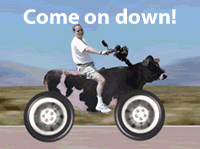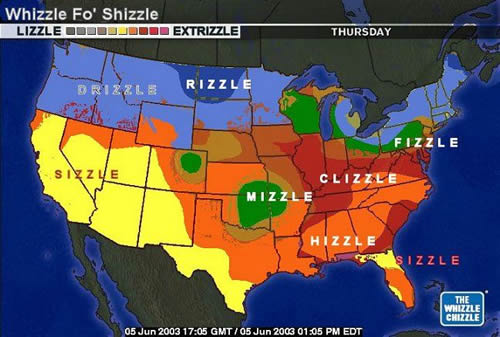I’m going to be talking about Starbucks, gentrification and related issues for the next little while, and I’m even going to tie them into the “How to Turn Toronto into a High-Tech Hub” series of articles I’ve been posting. Here’s the first in a series of articles that I’m going to write as data points for later articles.
The first time I’d ever heard of using a certain type of commerce as a metric for how well a place was doing was in an issue of Mother Jones magazine in the early 1980s, when I was about fifteen years old. I was reading an interview with Philippine dissident/political martyr Benigno “Ninoy” Aquino, Jr. (my parents knew him). In the interview, he mentioned that prostitution was an excellent economic indicator; the more prostitutes you saw in an area, the more dire its economic straits.
Since then, I’ve become aware of similar observations, such as The Economist’s Big Mac index (it turns 20 this year!), an informal but useful yardstick for comparing purchasing power in different countries. In the same vein, there’s also Thomas Friedman’s observation that no two countries with a McDonald’s have ever gone to war with each other, which no longer true since the US invasion of Panama or NATO’s attack on Serbia (The Economist points out that NATO’s member nations have McDonald’s, not NATO itself).
Since I’m going to talk about Starbucks for the next little while, I thought I’d do a little quick research. It turns out that cities with a strong Starbucks presence tend to be those ranked as highly sustainable and livable. The CityTownInfo Blog has an entry which says:
It seems that every week some organization or another comes out with a list of American’s best cities. These lists go by different names (Most Livable Cities, Best Places, whatever), but some how they all end up with similar content. They have Seattle, San Francisco, Boston, Portland, and the like near the top of the list, and Detroit and New Orleans near the bottom…
These lists are good and useful, but it turns out that if you just list cities by the number of Starbucks locations per capita, you get a pretty similar result.
The table below has two columns. The left column lists the 50 largest U.S. cities with the most Starbucks per person, based on the information from CityTownInfo, from most Starbucks per person to least. The right column lists the 50 largest U.S. cities ranked by sustainability, from most to least, with data from this page. Any city that appears in both lists is highlighted in a not-quite-Starbusian green.
There’s some bonus data: any city in the table above whose name appears in boldface is listed on the America’s Most Livable Communities page.
|
The 50 Largest US Cities with the Most Starbucks Per Person (listed from most to least) |
The 50 Largest US Cities’ Overall Sustainability Rankings (listed in order from most to least) |
|---|---|
| Las Vegas | Portland |
| Seattle | San Francisco |
| Portland | Seattle |
| Sacramento | Philadelphia |
| Washington | Chicago |
| Denver | Oakland |
| Atlanta | New York |
| San Francisco | Boston |
| San Diego | Denver |
| Cincinnati | Minneapolis |
| Pittsburgh | Baltimore |
| Honolulu | Washington |
| Colorado Springs | Sacramento |
| Boston | Austin |
| San Jose | Honolulu |
| Fresno | Milwaukee |
| Miami | San Diego |
| Austin | Kansas City |
| Tucson | Albuquerque |
| Houston | Tucson |
| Albuquerque | San Antonio |
| Minneapolis | Phoenix |
| Dallas | San Jose |
| Charlotte | Dallas |
| Indianapolis | Los Angeles |
| Phoenix | Colorado Springs |
| Mesa | Las Vegas |
| Los Angeles | Cleveland |
| Chicago | Miami |
| Virginia Beach | Long Beach |
| Columbus | El Paso |
| Fort Worth | New Orleans |
| Omaha | Fresno |
| Wichita | Charlotte |
| Arlington, TX | Louisville |
| Santa Ana | Jacksonville |
| Long Beach | Omaha |
| St. Louis | Atlanta |
| Jacksonville | Houston |
| Memphis | Tulsa |
| San Antonio | Arlington, TX |
| Kansas City | Nashville |
| Nashville | Detroit |
| New York | Memphis |
| Oakland | Indianapolis |
| Oklahoma City | Fort Worth |
| Cleveland | Mesa |
| Tulsa | Virginia Beach |
| Baltimore | Oklahoma City |
| El Paso | Columbus |
Simply put, the sea of green in the table above shows what we math nerds like to call a strong correlation between Starbucks and some measure of quality of life. It’s not too hard to reason why this is so; if the demand for fancy coffee is high in a given place, it is quite likely that the local citizenry are fairly high up Maslow’s Hierarchy of Needs, no doubt with some portion of disposable income. They are certainly not the people featured in the newspaper clipping below:

Actual newspaper clipping. Click the image to read the full story.
Of course the Starbucks folks know this — they most certainly do market research before deciding to open a new branch. That’s why real estate agents jump for joy when their territory becomes the location of a new Starbucks: it’s a very good indicator that the neighbourhood — and housing prices (and hence their commissions) — are going up.







